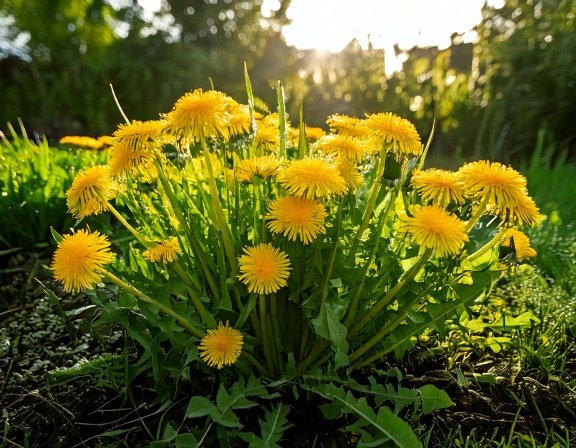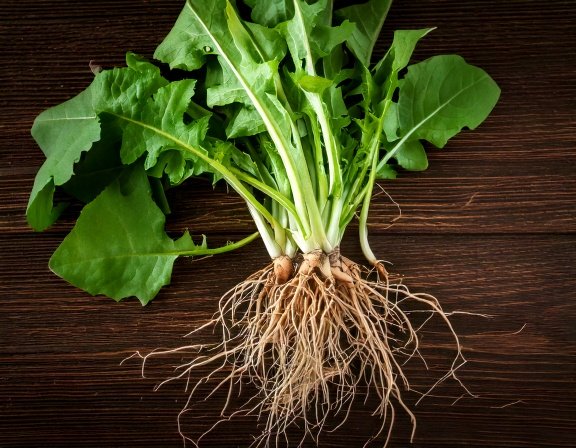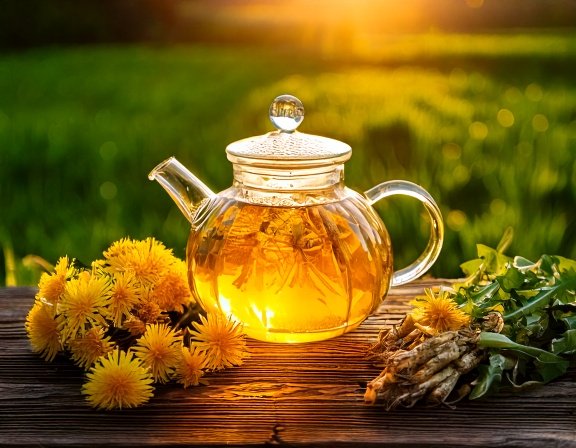
Dandelion Detox Benefits: How to Grow, Harvest & Make Cleansing Teas for Organ Health
The humble dandelion hides healing in every petal and root. Dandelion—often dismissed as a weed—is one of nature’s most powerful and accessible detoxifiers. Every part of the plant, from root to flower, is packed with compounds that help flush toxins, support liver health, and gently cleanse the kidneys and digestive system. In this guide, learn how to grow and harvest dandelion at home, and discover simple, delicious recipes for cleansing teas that support your body’s natural detox pathways.


Cleanse and restore with our step-by-step kidney detox, daily routines, and easy recipes for better health.
Download Free GuideHow to Grow Dandelion for Year-Round Cleansing
Dandelion (Taraxacum officinale) is a hardy perennial that grows easily in most soils—often thriving without care. While common in lawns and wild spaces, it’s easy to grow organically at home for safe, abundant harvests.
- Soil: Adapts to almost any soil but prefers loose, fertile ground.
- Light: Full sun to partial shade.
- Watering: Moderate—dandelion tolerates drought but grows best with regular watering.
- Planting: Sow seeds in early spring; thin seedlings to give roots room to develop.
- Container Tip: Grows well in pots for easy root harvesting.
- Quick Growing Tip: Let a few dandelions go to seed to ensure a steady, self-renewing patch for future harvests.


How and When to Harvest Dandelion
Dandelion is one of the most valuable and versatile plants in any herbal garden, and harvesting it at the right time ensures the highest concentration of its healing compounds. Both the roots and leaves can be collected for different purposes, making it a true full-season herb. The key to a potent harvest is knowing when each part is at its peak and how to handle it gently to preserve its natural vitality.
When to Harvest:
Harvest dandelion leaves in early spring before the plant flowers, when they’re tender and less bitter—perfect for salads, juices, or teas. For roots, the best time is early spring or late autumn when the plant’s energy and nutrients are stored underground. During these cooler seasons, the roots are thicker, darker, and richer in beneficial compounds like inulin and bitters that support liver and digestive health.
How to Harvest:
Use a garden fork or hand trowel to gently loosen the soil around the base of the plant. Grasp the greens near the crown and pull carefully to lift the entire taproot. Avoid breaking the root, as the deeper sections hold the most nutrients. Shake off excess soil and rinse the roots thoroughly in cool water. For the leaves, snip them cleanly above the crown, avoiding any that appear wilted or overly mature.
Drying & Storage:
Pat the leaves dry with a towel and lay them flat on a drying rack or hang in small bundles in a shaded, well-ventilated space. Roots can be chopped into small pieces before drying to prevent mold and speed up the process. Once fully dry, store both roots and leaves in airtight glass jars, labeled and dated. Keep them in a cool, dark place to preserve their earthy aroma and potency for up to a year.
Quick Tip: Harvest on a dry day after the morning dew has evaporated but before the afternoon heat. This timing helps retain the plant’s essential oils and ensures a clean, high-quality harvest ready for teas, tinctures, or homemade detox blends.


Reverse Your Fatty Liver 100% Naturally
- Focuses on whole-food nutrition, natural detox, and science-backed protocols
- Incorporates plant-based remedies and gentle lifestyle changes
- Learn practical steps for liver health—no risky drugs or crash diets
How to Make Cleansing Dandelion Teas
Dandelion tea is a gentle yet powerful way to cleanse and nourish the body from within. Known for supporting the liver, kidneys, and digestion, dandelion’s roots and leaves can be brewed into earthy, mineral-rich teas that help flush out toxins while replenishing vital nutrients. Whether you enjoy it roasted and robust or fresh and floral, this simple herbal tea offers daily balance and renewal—especially during seasonal transitions like spring and autumn.
Classic Detox Dandelion Root Tea
Simmer 1–2 teaspoons of dried, chopped dandelion root in 1½ cups of water for about 15 minutes. Strain into a mug and enjoy warm. The root’s bitters stimulate bile flow and support liver detoxification, making it a wonderful after-meal tonic. Add a slice of ginger or a touch of honey for flavor and extra digestive comfort.
Fresh Leaf Cleansing Tea
Steep a handful of fresh dandelion leaves in hot water for 5–7 minutes. Strain and sip slowly. This light, grassy infusion helps the kidneys eliminate excess fluids and can ease mild bloating or water retention. Pair with lemon or mint for a refreshing, cooling blend.
Roasted “Coffee-Style” Dandelion Brew
For a richer flavor, roast dried dandelion roots in a pan over low heat until dark brown and aromatic. Brew 1 tablespoon in 2 cups of hot water for 10–12 minutes. This earthy, caffeine-free drink makes an excellent coffee substitute and promotes digestive ease without overstimulation.
Dandelion & Nettle Mineral Tea
Combine 1 teaspoon each of dried dandelion leaf and nettle leaf in 2 cups of hot water. Steep for 10 minutes, then strain. This mineral-packed blend supports gentle detox, hormonal balance, and energy renewal—perfect for a daily wellness ritual.
Quick Tip: Drink dandelion tea once or twice daily for steady detox and digestive support. Alternate between leaf and root teas throughout the week to receive a full spectrum of nutrients and cleansing benefits.
Inulin, Taraxacin, & Potassium – These compounds aid detox, support liver and kidney function, and act as natural diuretics.